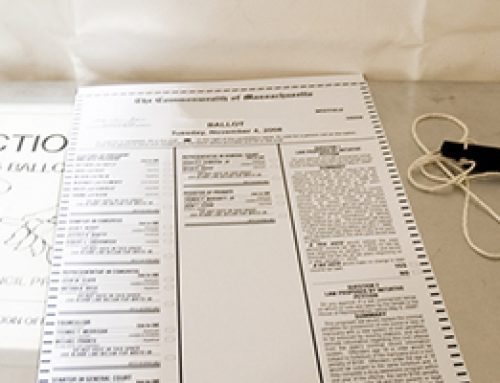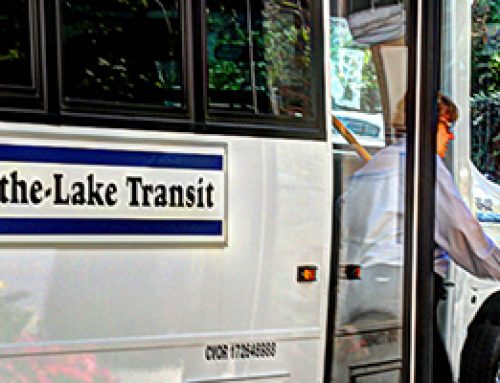Formal Volunteering can be defined as individuals giving their time to assist others on behalf of an organization. It is different from informal volunteering as volunteers must go through some organization to volunteer, rather than spontaneously engaging in volunteerism.
This indicator illustrates the number of volunteers who are volunteering with organizations within the Niagara-wide community.
The terms ‘formal’ and ‘informal’ volunteering are described in research done in 2000 at Carleton University:“Formal volunteering or helping is defined as any contribution of unpaid time to the activities of formal organizations. Informal volunteering or informal helping is any assistance given directly to non-household individuals that is, not through a formal organization. Formal giving is any money donation made directly to a formal charitable organization, while informal giving includes donating to charity cash boxes, making a bequest, making donations of food or clothing, or giving money to the homeless, or to non-household relatives. When the formal and informal modes of helping or giving are treated in combination, we speak of total helping or total giving.”
Source: Formal and Informal Volunteering and Giving: Regional and Community Patterns in Canada, Research Report, 2000, Carleton University
Retrieved From: http://www3.carleton.ca/casr/Formal.pdf
General information and statistics on Canadian volunteering can be found at
Formal Volunteering Across Canada, Statistics, 2007 – 2010
- Approximately 47% of Canadians or 13.3 million people volunteered through an organization or group
- Between 2007 and 2010 the total amount of hours volunteered by Canadians remained stable – approximately 2.1 billion hours in 2010
- Individuals who volunteered the most hours were older, widowed, no longer in the workforce, not likely to have any children at home, and attended religious meetings or services
- However, the highest rates of volunteering were found amongst Canadians who were younger, were single, married or in a common-law relationship, or had young children at home
- Between 2007 and 2010, there has not been any significant difference in the total amount of volunteering by Canadians.
Source: Canada Survey of Giving, Volunteering and Participating
Retrieved From: http://www.statcan.gc.ca/daily-quotidien/120321/dq120321a-eng.htm
Volunteer Statistics from INCommunities’ Database (formerly known as Information Niagara) 2013 Annual Report
- 1,746 Clicked “yes I want to volunteer” on the Volunteer Matching Database which was a 42% increase over 2012
- There were 3,630 Page views of the Donation of Goods portal
- 388 new Volunteer profiles were created (18% increase from 2012)
- The 2014 Change the World-Ontario Youth Volunteer Challenge, surpassed targets with 1,255 total youth volunteers providing 4,105 hours of volunteering during the 6 week campaign.
Source: INCommunities 2013 Annual Report
Retrieved From: http://incommunities.ca/about-us/reports/
Points Relating to Volunteering from the 2012 Aging Well in Niagara Study
This study asked senior citizen residents how the Regional Municipality of Niagara can help support them as they age in their homes:
- There is a need for more opportunities for seniors to volunteer in the community as a way to become more socially integrated
- There are not enough resources and volunteers to meet all the needs of seniors in Niagara, leading to long waiting lists for programs, or services being cut and reduced
- There is a need for more volunteers, and more support for caregivers – many of whom may have their own health concerns – to avoid burnout
Source: Regional Municipality of Niagara, Aging Well in Niagara Study, 2012
Retrieved From: http://www.niagaraknowledgeexchange.com/resources-publications/aging-well-in-niagara-a-conversation-about-the-needs-of-seniors-2/
Trends in Volunteering Statistics for Niagara Region Senior Services (from 2011 to 2013)
- “Also, Seniors Services benefits from the services of over 800 volunteers who contribute at least $1 million in services and raise approximately $.25 million annually for various resident needs.” Niagara Region Report COM 10-2012
- “In 2012, Seniors Services’ residents and clients received at least 88,000 hours of service from the 906 volunteers who are involved in the Niagara Region’s eight long term care homes and community programs. The estimated value of these hours, using a minimum wage value of $10.25/hr., is approximately $902,000; however, the actual value is much greater given the many high skilled services our volunteers provide.“ Niagara Region Report COM 10-2013
- “The various volunteer fundraising initiatives provided the long-term care homes with approximately $273,000 in 2012, to support the homes’ purchases of resident care equipment and other quality of life improvements for the residents of the homes.” Niagara Region Report COM 10-2013
Table 1: 2012 Volunteer Hours and Financial Support for Senior Services. Niagara Region Report COM 10-2013

Table 2: 2013 Volunteer Hours and Financial Support for Senior Services. Niagara Region Report COM 10-2013

Quote related to above table: “In 2013, 952 volunteers again contributed well over $1 million (donations of time and money) to our homes: volunteers provided 83,274 hours of service to the residents and clients of our long-term care homes and community programs (at just the minimum wage rate the value exceeds $850,000)” Niagara Region Report COM 07-2014
Source: Niagara Region Community Services
Retrieved From:
- http://www.niagararegion.ca/council/Council%20Documents/OCRBW-COM%2010-20122012-04-11%20114303.pdf
- http://www.niagararegion.ca/council/Council%20Documents/OCRBW-COM%2010-20132013-03-19%20113826.pdf
- http://www.niagararegion.ca/council/Council%20Documents/COM%2007-2014.pdf
Informal Volunteering
It is important to separate formal and informal volunteering as they are very different and represent different aspects of social engagement. Informal volunteering refers to individuals who provide direct assistance without going through an organization.
The following statistics are from the 2007 and 2010 Canada Survey of Giving, Volunteering and Participating (CSGVP).
- In 2010, approximately 83% of Canadians helped another individual at least once that year
- The proportion of Canadians who took part in informal volunteering remained the same in 2007 and 2010
- The most frequent types of help given daily or weekly in 2010 was teaching, coaching or mentoring (42%), providing health-related and personal care (38%), shopping or appointments (29%), and housework or household maintenance (31%)
Source: Canadian Social Trends 2012, Statistics Canada
Retrieved from: http://www.statcan.gc.ca/pub/11-008-x/11-008-x2012001-eng.pdf
Hour Republic: a Volunteer Solution for Students
Charity Republic is a Canadian-based social enterprise created at the Velocity Garage, a business incubator at the University of Waterloo. With a mission to connect people who strive to make a positive impact on the world through community involvement, Charity Republic helps volunteers to reflect on their experiences with a charity or nonprofit and helps potential volunteers find the most rewarding opportunities possible.
Hour Republic is a new tool offered by Charity Republic. It is a volunteer and co-op solution for students to track volunteer/co-op hours electronically. Registered, non-profit agencies can add opportunities to the Hour Republic site and students can view them to connect to opportunities in their communities.
This community involvement dashboard for secondary students helps them to verify volunteer hours. Parents can access the dashboard to review and verify information.
Source: Hour Republic
Retrieved From: www.hourrepublic.com








